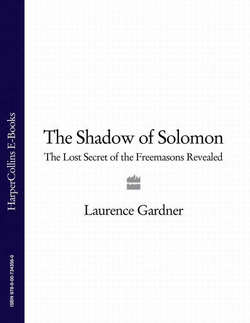Читать книгу The Shadow of Solomon: The Lost Secret of the Freemasons Revealed - Laurence Gardner - Страница 15
Old Masters
ОглавлениеThe legend of Hiram Abiff and the building of Solomon’s Temple, which dominates the 3rd degree of modern Craft Freemasonry first appeared in print as late as 1730 in a treatise by the London mason Samuel Pritchard, entitled Masonry Dissected.18 Its appearance in that work indicates that it was known earlier as part of the newly designed Grand Lodge ritual, although not mentioned by Anderson in 1723. The English scholar Thomas Paine (1723-1809) stated that Pritchard swore an oath before the Lord Mayor of London that his Masonry Dissected was a ‘true and genuine copy of every particular’—but he did not say a copy of what! (Paine was personally famedfor his works, Common Sense, Age of Reason and The Rights of Man, along with his part in the American Revolution.) We shall examine in detail the main Hiramic legend in chapter 8, but for now we can look at another account of Freemasonry’s origins as it appeared soon after the foundation of United Grand Lodge.
In 1802, a Portuguese journalist named Joseph Hippolyte da Costa was imprisoned by the Catholic Inquisition for the crime of being a Freemason, as was denounced by papal decree. Following his escape after three years, in 1820 he wrote an essay entitled ‘History of the Dionysian Artificers’ which drew parallels between masonic initiation and the Orphic mysteries. (See chapter 5 for more on this Portuguese mason.)
In this account, Hiram Abiff is said to have belonged to an ancient society known as the Dionysian Artificers, who emerged around 1000 BC just before the building of Solomon’s Temple.19 They took their name from the Greek god Dionysus (Bacchus), and were associated with another group called the Ionians, who built the Temple of Diana at Ephesus. Apparently, when in Jerusalem, the Dionysian Artificers called themselves the Sons of Solomon, and used Solomon’s six-pointed seal (two interlaced triangles) as their masons’ mark. They were seemingly masters of sacred geometry and hermetic philosophy.
There is no reason to doubt the existence of the Dionysian Artificers. They were, in fact, cited by the Greek geographer Strabo in the 1st century BC. He wrote that they acquired their name because Dionysus was reckoned to be the inventor of theatres. Whether Solomon’s artificer, Hiram of Tyre, was associated with this group is another matter. He might well have been if they had a presence in Phoenicia, but there is no mention of the Hiram connection that can be discovered prior to the 1820 treatise.
Another addition to the said masonic pedigree comes in the form of a college of architects called the Comacine Masters, who were based at Lake Como in Northern Italy during medieval times. The masonic link to this guild was said to have been referenced by a Lucy Baxter (pen-name Leader Scott) in her book The Cathedral Builders, published in 1899. The theme of a link between the Comacines and Freemasonry was subsequently taken up in a booklet called The Comacines that was serialized in the masonic journal, The Builder, in 1910.
From the architectural records of Lombardy, it can be deduced that the Magistri Comacini were indeed prominent in their day, and they made a good contribution to Italian design between the years 800 and 1000. But there is nothing whatever to associate them in any way with English masonic history. In fact, not even Leader Scott (who is widely misquoted) said there was a connection. Having investigated the possibility, she stated: ‘There is no certain proof that the Comacines were the veritable stock from which the pseudo Freemasonry of the present day sprang.’20
